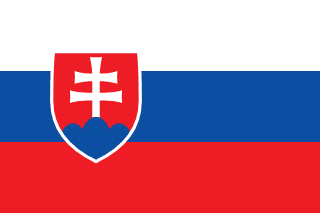

Employer of Record Guide in Slovakia
Slovakia's growing tech sector and skilled workforce make it an attractive destination for global expansion, but navigating local employment laws requires expertise. Our comprehensive guide helps you hire compliantly and tap into this dynamic Central European market with confidence.
Capital City
Currency
Languages
Population size
Services available in this country:

Key stats and facts
Slovakia offers a competitive business environment with a flat 19% tax rate and strong talent pools in IT, engineering, and healthcare across major hubs like Bratislava and Košice. Understanding the local market dynamics is essential for successful team expansion in this EU member state.
Major economic hubs
Skills in demand
Currency
Language
GDP per Capita
Standard Tax Rate
Your EOR guide in Slovakia
From payroll cycles to statutory leave entitlements, Slovakia's employment framework has specific requirements that impact your hiring strategy. This detailed breakdown covers everything from minimum wage compliance to onboarding timelines, ensuring you stay compliant while building your Slovak team.
Minimum Wage
Slovakia's minimum wage is €760 per month for 2025, applicable to all employees regardless of age or experience level. This translates to approximately €4.48 per hour based on a standard 40-hour work week.
Payment Requirements:
- Wages must be paid at least monthly
- Payment must occur by the end of the following month
- Employers can pay more frequently (bi-weekly, weekly) if desired
Payroll Cycle
- Monthly: Most common practice, payment by end of following month
- Bi-weekly: Allowed but less common
- Weekly: Permitted but rarely used
Slovak employers typically process payroll monthly, with payments made by the last day of the month following the work period.
Individual Income Tax
Slovakia operates a flat tax system for personal income:
| Income Type | Tax Rate |
|---|---|
| Employment Income | 19% |
| Self-Employment Income | 19% |
| Capital Gains | 19% |
Tax-Free Allowance: €4,511.67 annually (approximately €376 monthly)
Tax Residency Criteria
Individuals are considered Slovak tax residents if they:
- Spend more than 183 days in Slovakia during a calendar year, or
- Have their centre of vital interests in Slovakia (permanent home, family, economic ties)
Tax residents pay Slovak income tax on worldwide income, while non-residents pay only on Slovak-source income.
Employer Payroll Contributions
Slovak employers must contribute to social and health insurance systems. Total employer contributions typically range from 35-36% of gross salary.
| Contribution Type | Employer Rate | Employee Rate | Total |
|---|---|---|---|
| Health Insurance | 10% | 4% | 14% |
| Social Insurance | 25.2% | 13.4% | 38.6% |
| - Sickness Insurance | 1.4% | 1.4% | 2.8% |
| - Pension Insurance | 14% | 4% | 18% |
| - Disability Insurance | 3% | 3% | 6% |
| - Unemployment Insurance | 1% | 1% | 2% |
| - Accident Insurance | 0.8% | 0% | 0.8% |
| - Guarantee Fund | 0.25% | 0% | 0.25% |
| - Reserve Fund | 4.75% | 4% | 8.75% |
| Total Employer Cost | ~35.2% | 17.4% | 52.6% |
Note: Rates may vary slightly based on specific insurance providers and risk categories.
Working Hours
The standard work schedule in Slovakia is:
- 40 hours per week
- 8 hours per day
- Monday through Friday (typical)
Maximum Working Time:
- 48 hours per week (including overtime)
- 12 hours per day (including overtime)
Rest Periods:
- Minimum 30-minute break for shifts over 6 hours
- 11 consecutive hours of rest between working days
- 35 consecutive hours of rest per week (typically weekends)
Overtime Pay
- Rate: 1.25× regular hourly wage
- Limits: Maximum 8 hours overtime per week, 150 hours per year
- Calculation: Based on average hourly wage from previous quarter
- Alternative: Time off in lieu at 1.5× rate (if agreed in contract)
Night Work Premium:
- Additional 40% of minimum wage for work between 22:00-06:00
Bonus Payments
Bonuses are not legally mandated but are common practice. When provided, they:
- Must be included in social insurance calculations
- Are subject to income tax
- Should be clearly defined in employment contracts
- May impact overtime calculations if they're regular payments
Full-Time vs. Part-Time
- Full-time: 40 hours per week
- Part-time: Less than 40 hours per week
- Fixed-term contracts: Allowed for specific projects or temporary needs
- Indefinite contracts: Standard permanent employment arrangement
Vacation Leave
Slovak employees are entitled to paid annual leave based on age:
| Age Category | Annual Leave Entitlement |
|---|---|
| Under 33 years | 20 working days |
| 33 years and older | 25 working days |
Additional Leave:
- Employees working in difficult conditions may receive additional days
- Leave must be taken within the calendar year or by March 31 of the following year
- Unused leave must be paid out upon termination
Sick Leave
Employer-Paid Period:
- First 10 calendar days: 25% of average daily wage (paid by employer)
Social Insurance Period:
- From day 11 onwards: 55% of daily assessment base (paid by social insurance)
- Maximum duration: 52 weeks
Medical Certification:
- Doctor's certificate required from day 1
- Periodic medical examinations may be required for extended illness
Maternity Leave
- Duration: 34 weeks total
- Pre-birth: Up to 6-8 weeks before expected delivery
- Post-birth: Remaining weeks after delivery
- Benefits: 75% of daily assessment base (paid by social insurance)
- Job Protection: Position guaranteed upon return
Parental Leave
- Duration: Up to 3 years per child
- Eligibility: Available to either parent
- Benefits: Parental allowance from social insurance (amount varies)
- Flexibility: Can be taken part-time or shared between parents
Other Statutory Leave
Personal Leave:
- Wedding: 2 days
- Death of close family member: 2 days
- Moving residence: 1 day
- Medical examinations: Necessary time
Study Leave:
- Employees pursuing education may receive additional leave
- Typically unpaid unless specified in contract
Summary
| Leave Type | Duration | Paid? | Funding |
|---|---|---|---|
| Annual Leave | 20-25 days/year | Yes | Employer |
| Sick Leave | First 10 days | 25% pay | Employer |
| Sick Leave | After 10 days | 55% pay | Social Insurance |
| Maternity Leave | 34 weeks | 75% pay | Social Insurance |
| Parental Leave | Up to 3 years | Allowance | Social Insurance |
| Personal Leave | 2-5 days/year | Yes | Employer |
Termination Types
Termination by Employer:
- With notice (standard termination)
- Immediate termination (for serious misconduct)
- During probationary period
Termination by Employee:
- Resignation with notice
- Immediate termination (for serious employer breach)
Notice Period Requirements
Notice periods depend on length of employment:
| Length of Employment | Notice Period |
|---|---|
| Probationary period | No notice required |
| Less than 1 year | 1 month |
| 1-5 years | 2 months |
| Over 5 years | 3 months |
Special Circumstances:
- Pregnant employees: Cannot be terminated except for serious misconduct
- Employees on sick leave: Termination prohibited during illness
- Protected categories: Additional protections for disabled employees, union representatives
Severance Pay
Severance is required for certain terminations:
| Length of Employment | Severance Amount |
|---|---|
| Less than 2 years | 1 month's salary |
| 2-5 years | 2 months' salary |
| 5-10 years | 3 months' salary |
| 10-20 years | 4 months' salary |
| Over 20 years | 5 months' salary |
Calculation Base: Average monthly wage from previous 12 months
Probationary Periods
- Maximum duration: 3 months
- Termination: Either party can terminate without notice or reason
- Extension: Not permitted beyond 3 months
- Benefits: Full employment rights apply during probation
Final Pay Requirements
Employers must provide final settlement within 15 days of employment termination, including:
- Outstanding salary
- Unused vacation pay
- Severance pay (if applicable)
- Any other contractual benefits
Legal Protections
Anti-Discrimination Laws:
- Protected characteristics include age, gender, race, religion, disability
- Pregnancy discrimination is strictly prohibited
- Equal pay requirements for equal work
Wrongful Dismissal:
- Employees can challenge terminations in labour courts
- Remedies include reinstatement or additional compensation
National Public Holidays
Slovakia observes 15 statutory public holidays annually:
| Holiday | Date |
|---|---|
| New Year's Day | January 1 |
| Epiphany | January 6 |
| Good Friday | Varies (March/April) |
| Easter Monday | Varies (March/April) |
| Labour Day | May 1 |
| Liberation Day | May 8 |
| St. Cyril and Methodius Day | July 5 |
| Slovak National Uprising Day | August 29 |
| Constitution Day | September 1 |
| Our Lady of Seven Sorrows Day | September 15 |
| All Saints' Day | November 1 |
| Freedom and Democracy Day | November 17 |
| Christmas Eve | December 24 |
| Christmas Day | December 25 |
| St. Stephen's Day | December 26 |
Holiday Pay Rules
Eligibility:
- All employees are entitled to public holiday pay
- Payment equals average daily wage
Working on Holidays:
- Employees receive regular pay plus 100% premium
- Alternative: Additional day off plus regular holiday pay
Holiday Falling on Weekend:
- No substitute day provided
- Holiday pay still applies for eligible employees
Required Documents for Employment
Employment Contract Must Include:
- Job title and description
- Salary and benefits
- Working hours and location
- Probationary period (if applicable)
- Notice periods
- Termination conditions
Employee Documentation:
- Valid identification (ID card or passport)
- Social security number
- Tax identification number
- Bank account details for salary payments
- Educational certificates (if relevant)
- Work permit (for non-EU citizens)
Work Authorization
EU Citizens:
- No work permit required
- Must register residence if staying over 3 months
Non-EU Citizens:
- Work permit required before starting employment
- Temporary residence permit for stays over 90 days
- Blue Card available for highly skilled workers
Social Insurance Registration
Employers must register employees with:
- Social Insurance Agency (Sociálna poisťovňa)
- Health insurance company (employee's choice)
- Registration must occur before first day of work
Tax Registration
- Employees receive tax identification number from tax office
- Employers must register as tax withholding agents
- Monthly tax returns required
Probation Period Setup
- Maximum 3 months for standard positions
- Must be specified in employment contract
- Both parties can terminate without notice during probation
- Full employment rights apply (salary, benefits, working time limits)
Onboarding Timeline
| Step | Timeline |
|---|---|
| Job offer accepted | Day 0 |
| Work permit application (non-EU) | 30-60 days before start |
| Employment contract signed | 1-3 days before start |
| Social insurance registration | Before first day |
| Tax registration | Before first day |
| Employee handbook provided | First day |
| Workplace safety training | First week |
What the EOR Handles
Borderless AI manages:
- Employment contract preparation and compliance
- Social insurance and tax registration
- Payroll processing and tax withholding
- Statutory reporting requirements
- Local labour law compliance
- Employee benefits administration
Worker Classification: Employee vs Contractor
Slovak law strictly distinguishes between employees and independent contractors:
Employees (Zamestnanci):
- Work under employer supervision and control
- Use employer's tools and equipment
- Receive regular salary with tax and social insurance deductions
- Entitled to all labour law protections
Independent Contractors (SZČO - Samostatne zárobkovo činná osoba):
- Work independently with minimal supervision
- Use own tools and bear business risks
- Invoice for services and handle own taxes
- No employment law protections
Misclassification Risks:
- Tax authorities actively investigate worker classification
- Penalties include back taxes, social insurance contributions, and fines
- Employees can claim reclassification and back benefits
Collective Bargaining
Union Presence:
- Approximately 12% of Slovak workforce is unionised
- Stronger presence in manufacturing, public sector, and large companies
- Collective agreements can override standard labour law provisions (usually favourably for employees)
Works Councils:
- Required in companies with 50+ employees
- Employee representatives have consultation rights on major decisions
- Must be informed about economic situation, employment changes, working conditions
Cultural Norms & Workplace Expectations
Communication Style:
- Direct but polite communication preferred
- Formal address (using titles) common in initial interactions
- Punctuality highly valued
Work-Life Balance:
- Standard business hours: 8:00-17:00
- Lunch breaks typically 12:00-13:00
- Flexible working arrangements increasingly common
- August vacation period traditional
Professional Development:
- Employees value training and skill development opportunities
- Language skills (especially English, German) highly prized
- Technical certifications important in IT and engineering sectors
Remote Work Considerations
Legal Framework:
- Remote work (home office) legally recognised since 2021
- Must be agreed in writing (contract amendment)
- Employer responsible for occupational health and safety
- Equipment and expense reimbursement negotiable
Tax Implications:
- No special tax treatment for remote work
- Cross-border remote work may create tax complications
- Social insurance remains in Slovakia for Slovak employees
Practical Considerations:
- Internet and technology infrastructure generally good
- Time zone: Central European Time (CET/CEST)
- Language: Slovak primary, English common in international companies
Note: This guide reflects Slovak employment regulations. Please verify all information with current legal sources and consider consulting local employment law experts for specific situations.
Built-in benefits packages for Slovakia
When the world is your competition, it pays to incentivize new hires and existing alike. Borderless AI benefits packages typically inlucde:

Medical Insurance

Dental Insurance

Retirement Contribution

Life Insurance

Vision Insurance
Explore other countries

Unlock global hiring potential
Simplify your payroll and hiring processes today.








